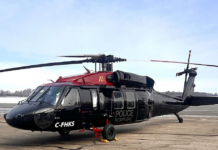In the late 1980s, while based in London, I received a tip from the Canadian consulate that a person linked to the greatest act of terrorism in Canada’s history was about to be arrested in the English city of Sheffield.
For that reason alone, I have never forgotten the tragedy of Air India Flight 182, which originated in Canada and was blown up over the Irish sea on the last week of June 1985 — killing all 329 people aboard, 280 of them Canadian citizens.
Now, 38 years later, few Canadians can remember it even happening.
A new Angus Reid poll found that nine-in-10 Canadians say they have little (61%) or no (28%) knowledge of the worst single instance of the mass killing of their fellow citizens, with three-in-five (58%) of those younger than 35 saying they have never even heard of it.
In British Columbia, where the conspiracy to commit the bombings was hatched, and Ontario, where many of the victims lived, awareness is higher, but fewer than one-in-six in each province say they know a lot about the attack.
In 2016, the bombmaker, Inderjit Singh Reyat, was getting out of jail once again and, once again, he was keeping his mouth shut, offering just enough tactical repentance to ensure his release — and no more.
Reyat, convicted three times, is still the only man convicted at all in Canada’s worst-ever mass murder. Until Sept. 11, the bombing of Air India was the deadliest terrorist attack anywhere, ever.
Yet few remember.
Even when Reyat was arrested by the British constabulary in Sheffield (where he worked in an auto plant), few knew who the bearded and turbaned man in the parka who had just showed up at the Bow’s Street courthouse in London was — the Fleet St. press more interested in an alleged spy being arraigned in the next courtroom.
But soon word got out.
The 1985 Air India bombing involved extremists advocating for a separate Sikh state in Punjab. Indian extremists allegedly planted a bomb on Air India Flight 182. The bomb exploded while the plane was off the coast of Ireland, killing all 329 on board. A second bomb targeting Air India Flight 301 from Tokyo to Bangkok, originating in Vancouver, detonated at the terminal in Japan’s Narita International Airport, killing two baggage handlers.
The decades since the tragedy have seen numerous trials and investigations (leading only to the conviction of Reyat in connection to the case), a public inquiry into the Canadian government handling of the incident, an official government apology 25 years after the fact, and memorials built, but yet the Air India bombings continue to be a relatively unknown piece of Canadian history.
Just one-in-ten (11%) Canadians told Angus Reid they “know a lot” about the incident. A majority (61%) say they know just the main details while three-in-10 (28%) have not heard about the Air India bombings at all. Awareness is higher in B.C., home to the conspirators in the bombings, and Ontario, where the ill-fated flight originated.
Meanwhile, more than two-in-five (46%) in Quebec say they are completely unaware of the event.
Canadians who were born after the Air India bombings are most likely to say they had not heard of the tragedy. More than half of men aged 18 to 34 (53%), and three-in-five women that age (62%), say they are not even aware of the event.
One-quarter (23%) of men aged 55-plus say they know a lot about the incident, double the rate of any other demographic.
Yet the tragedy resonates with each passing year.
.





















